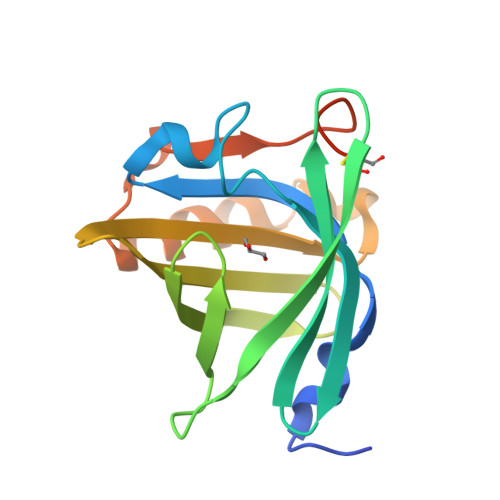Crystal Structure of the Dog Lipocalin Allergen Can f 2: Implications for Cross-reactivity to the Cat Allergen Fel d 4
Madhurantakam, C., Nilsson, O.B., Uchtenhagen, H., Konradsen, J., Saarne, T., Hogbom, E., Sandalova, T., Gronlund, H., Achour, A.(2010) J Mol Biology 401: 68-83
- PubMed: 20621650
- DOI: https://doi.org/10.1016/j.jmb.2010.05.043
- Primary Citation of Related Structures:
3L4R - PubMed Abstract:
The dog lipocalin allergen Can f 2 is an important cause of allergic sensitization in humans worldwide. Here, the first crystal structure of recombinant rCan f 2 at 1.45 A resolution displays a classical lipocalin fold with a conserved Gly-Xaa-Trp motif, in which Trp19 stabilizes the overall topology of the monomeric rCan f 2. Phe38 and Tyr84 localized on the L1 and L5 loops, respectively, control access to the highly hydrophobic calyx. Although the rCan f 2 calyx is nearly identical with the aero-allergens MUP1, Equ c 1 and A2U from mouse, horse and rat, respectively, no IgE cross-reactivity was found using sera from five mono-sensitized subjects. However, clear IgE cross-reactivity was demonstrated between Can f 2 and the cat allergen Fel d 4, although they share less than 22% sequence identity. This suggests a role for these allergens in co-sensitization between cat- and dog-allergic patients.
Organizational Affiliation:
Centre for Infectious Medicine, F59, Department of Medicine Huddinge, Karolinska University Hospital Huddinge, Karolinska Institutet, Stockholm, Sweden.

















